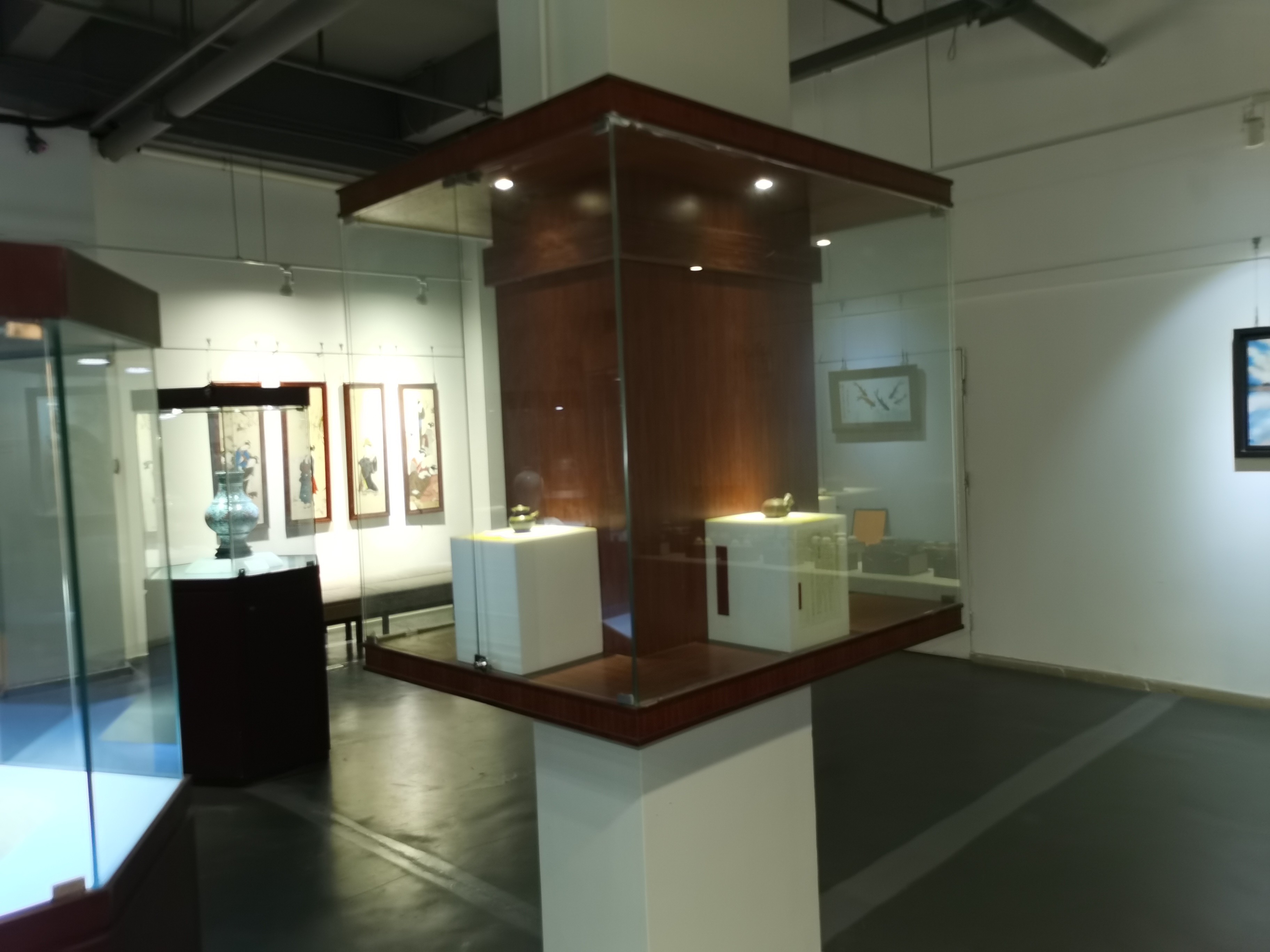As the "guardian" of cultural heritage, museum exhibition cabinets not only carry the function of cultural relics display, but also shoulder the responsibility of protecting precious historical relics. Its maintenance work is not simple cleaning and maintenance, but requires systematic and professional operation norms to ensure the long-term stable operation of the display cabinet, while prolonging the life of cultural relics. Huabo Art Exhibition will explore the scientific maintenance methods of museum exhibition cabinets from daily cleaning, material maintenance, environmental management and other dimensions.
& nbsp; & nbsp; & nbsp; I. Daily cleaning: Details determine life span
& nbsp; & nbsp; & nbsp; 1. Cleaning frequency and tool selection
& nbsp; Surface cleaning: After the museum is closed every day, basic cleaning should be carried out on the surface of the display cabinet, focusing on wiping the fingerprints, grease and other stains left by visitors. Choose soft and absorbent cotton cloth or flannel, and avoid using rough cloth (such as towels with threads and hard particles) to prevent scratching the surface or glass of the display cabinet.
& nbsp; Deep cleaning: carry out comprehensive disinfection once a week, use professional display cabinet cleaner (such as neutral pH display cabinet care spray wax), avoid soapy water, detergent and other products containing corrosive ingredients, which will accelerate the oxidation of wood or metal surface, resulting in a decrease in gloss.
& nbsp; 2. Glass cleaning skills
& nbsp; & nbsp; & nbsp; 3. Maintenance
of lamps and circuits & nbsp; Regularly inspect the led lamps and transformers to ensure that the lighting system is not aged or short-circuited. When cleaning the lamps, it is necessary to cut off the power, use the air duct to blow off the dust at a low speed, and then wipe it with a dry cotton cloth. Avoid spraying directly with water or detergent to prevent the circuit from getting damp.

& nbsp; & nbsp; & nbsp; & nbsp; II. Targeted maintenance of materials: differentiated treatment is the key
& nbsp; & nbsp; & nbsp; 1. Wooden display case
& nbsp; Do not wipe with clean water. Moisture penetration will cause the wood to swell and mildew. It is recommended to use industrial alcohol or special wood maintenance agent to gently wipe with pure cotton cloth. Pay attention to check the internal power interface of the display cabinet to ensure that it is dry and free from moisture.
& nbsp; 2. Metal display case (steel/aluminum)
& nbsp; & nbsp; & nbsp; 3. Composite display case
& nbsp; & nbsp; & nbsp; For glass and metal/wood combined display cases, it is necessary to focus on checking whether the joint sealing strip is intact. Regularly replace the aging silica gel or sealant to ensure the air tightness of the display cabinet and prevent the impact of temperature and humidity fluctuations on cultural relics.
& nbsp; III. Environmental Management and Risk Control
& nbsp; & nbsp; 1.Temperature and humidity control
& nbsp; The interior of the display cabinet shall be equipped with a constant temperature and humidity system, and appropriate parameters shall be set according to the material of the cultural relics (for example, RH 45% -55% for paper cultural relics and RH 35% -45% for metal cultural relics). Avoid extreme temperature and humidity leading to deformation of display cabinets or corrosion of cultural relics.
& nbsp; & nbsp; & nbsp; 2. Light Management
& nbsp; LED light sources with low UV and low heat output are preferred, and the light intensity shall be calibrated regularly (no more than 50 Lux). Avoid direct natural light. Light damage can be reduced by installing shades or adjusting the position of the display case.
& nbsp; 3. Contingency plan and training

& nbsp; & nbsp; & nbsp; & nbsp; IV. Professional Tools and Product Applications
& nbsp; & nbsp; & nbsp; 1. Ultrasonic Cleaner
& nbsp; & nbsp; & nbsp; Used to clean wipes to remove residual dust and particles, ensuring a clean condition for each use. Repeated use of dirty rags will aggravate the surface wear of display cabinets.
& nbsp; & nbsp; & nbsp; 2. Anti-reflective glazing
& nbsp; & nbsp; & nbsp; For highly reflective display case glass, professional anti-reflective coating can be sprayed regularly to improve display clarity and reduce fingerprint adhesion.
& nbsp; & nbsp; 3. Intelligent monitoring system
& nbsp; The Internet of Things technology is introduced to monitor the temperature, humidity, sealing and lighting status of the display cabinet in real time, and automatically alarm abnormal conditions, so as to improve the efficiency of preventive maintenance.
& nbsp; The maintenance of museum display cabinets is not only a technical problem, but also a reverence for cultural heritage. Through systematic cleaning, material differentiation maintenance, precise environmental control and application of professional tools, a "micro-environment" for the safety of cultural relics can be constructed. Only by integrating scientific methods into daily operation can exhibition cabinet truly become a "transparent bridge" between cultural relics and audiences, so that the Millennium civilization can be inherited in tranquility.
& nbsp; Huabo Art Exhibition has been deeply engaged in the design, customization, production and installation of exhibition cabinets for more than ten years, creating quality with ingenuity and leading the future with innovation. We focus on providing one-stop display cabinet solutions
for museums, art galleries, memorials, art galleries, science and technology museums, history museums, memorials and other cultural institutions.